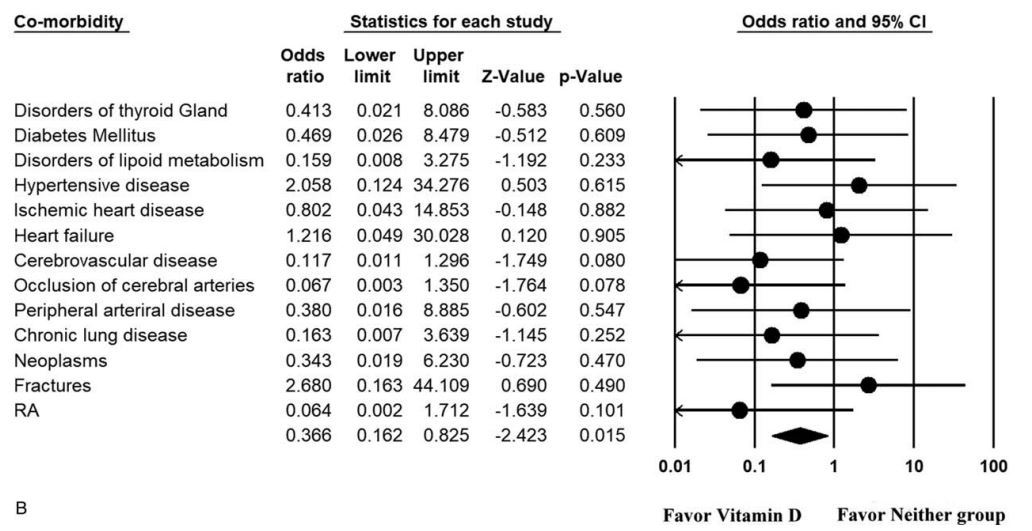Osteoporosis treatment with Vitamin D – far healthier and 10X fewer afib events (vs bisphosphonates)
Vitamin D and bisphosphonates therapies for osteoporosis are associated with different risks of atrial fibrillation in women: A nationwide population-based analysis
Medicine: October 2018 - Vol 97 - # 43 - p e12947, doi: 10.1097/MD.0000000000012947
Yang, Hung-Yu, MD, MSa,b,c; Huang, Jen-Hung, MDa,c; Chiu, Hung-Wen, PhDb,; Lin, Yung-Kuo, MD, PhDa,c; Hsu, Chien-Yeh, PhDd,e; Chen, Yi-Jen, MD, PhDa,f,
📄 Download the PDF from VitaminDWiki
10X fewer Afib events

Far fewer health problems in group getting vitamin D

Osteoporosis and atrial fibrillation (AF) are common in post-menopausal women. Vitamin D and bisphosphonates are widely used to treat osteoporosis, and these may have different effects on the risk of AF.
The goal of this study was to evaluate whether different agents for treating osteoporosis modulate the risk of AF in a population-based database.
We identified 20,788 female patients suffering from osteoporosis who were or were not treated with vitamin D or bisphosphonates using the Taiwan National Health Insurance nationwide database from 2000 to 2008 and followed them up for 5 consecutive years to determine if they had a new diagnosis of AF after the diagnosis of osteoporosis.
There were 14 (2.67%) new AF diagnoses in osteoporosis patients treated with bisphosphonates, one (0.28%) new AF diagnosis in patients treated with vitamin D, and 279 (1.40%) new AF diagnoses in patients who were not treated with vitamin D or bisphosphonates (neither group). Osteoporosis patients who received bisphosphonates showed a higher incidence of AF occurrence than those that were not treated with bisphosphonates (P = .015). In contrast, 1 patient who received vitamin D had a new diagnosis of AF during the study period; thus, the incidence was significantly lower than that in the patients treated with bisphosphonates (P = .007). In addition, the patients who were treated with vitamin D had a lower incidence of AF than did those who were not treated with either vitamin D or bisphosphonates (P = .074). Kaplan–Meier analysis also showed a significant difference in AF occurrence in different groups during the 5-year follow-up (P = .010).
Different treatment for osteoporosis may carry diverse risks of AF occurrence. Vitamin D may have potential beneficial effects of reducing AF occurrence in osteoporosis patients.
